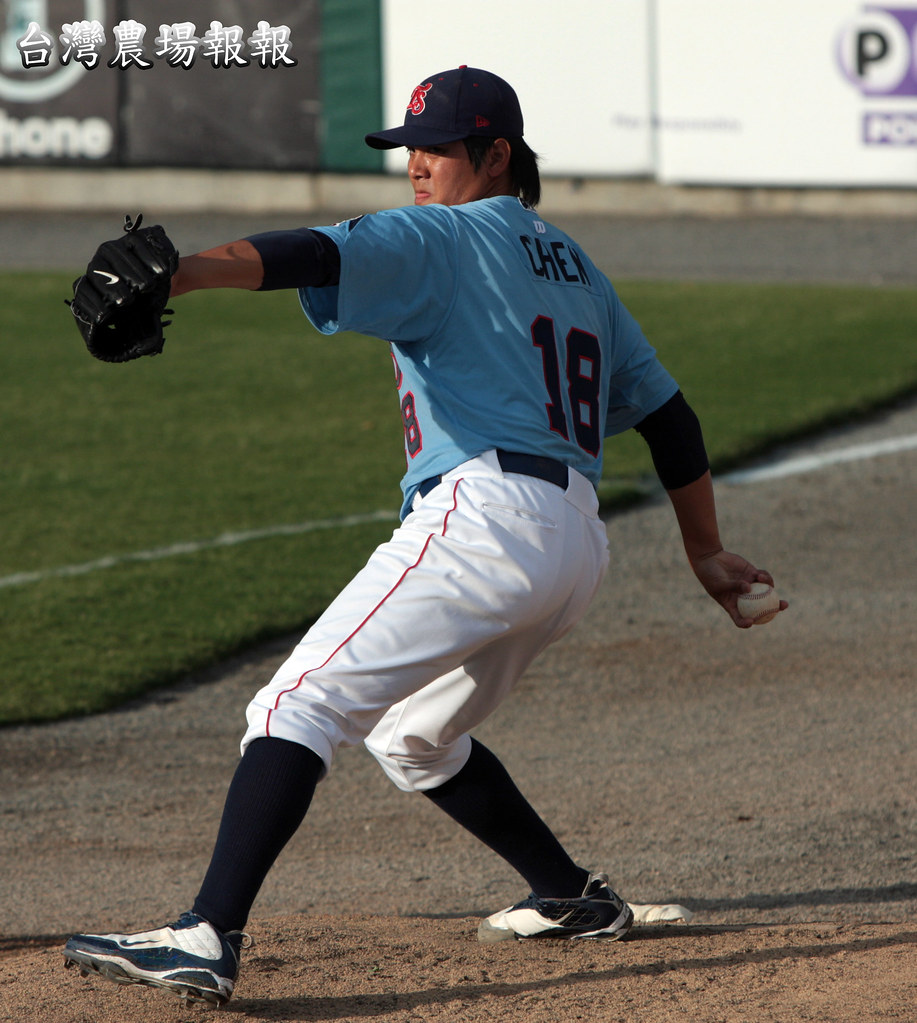 Hung-Wen Chen seems to have posted a very strong season thus far with a tiny 2.27 ERA on the season. Players who can post those types of ERAs in AA tend to quickly be classified as top prospects. However, let's take a closer look at his season and determine whether or not he deserves to be called a top prospect.
Hung-Wen Chen seems to have posted a very strong season thus far with a tiny 2.27 ERA on the season. Players who can post those types of ERAs in AA tend to quickly be classified as top prospects. However, let's take a closer look at his season and determine whether or not he deserves to be called a top prospect. First let's take a look at two lines of ratios:
GB% 40.8 BB/9 2.12 K/9 5.54 HR/9 0.71
GB% 42.5 BB/9 2.08 K/9 6.05 HR/9 0.77
Those numbers seem basically the same to me. And why not? They're from the same pitcher. The first line is Chen's 2010 season and the second from his 2009 season (both with the AA Tennessee Smokies). However, his ERA this season is 2.27 while last year was 4.48. What could have contributed to this large difference in ERA?
Let's examine what a pitcher can or can't control and how we expect these factors to affect his ERA. It's easy to see that pitchers control walks and strikeouts. Either a pitcher has good control or he doesn't. Similarly he either has the ability to strikeout guys or he doesn't. There isn't much luck involved in walks and strikeout. Pitchers control the percentage of ground balls hit off them. A pitcher with a hard sinker will induce much more grounders than one who throws only 4-seam fastballs. Also the number of HR's given up is more or less under the pitcher's control. Pitcher's who give up lots of flyballs are more likely to give up HRs as are pitchers who throw too often down the middle of the plate. There's some elements of luck in HR rate such as smaller parks or strong winds, but more or less it's a repeatable skill.
So what doesn't the pitcher control? Basically where the ball lands. Let's say a pitcher induces lots of groundballs and we would like to think that he has some special ability to direct these balls to his fielders. It turns out that pitchers have no such ability. A researcher named Voros McCracken empirically proved this to be true nearly a decade ago. For example, Greg Maddux was one of the best pitchers to ever play the game. However, his batting average of balls in play (BABIP) in 1998 was .272 leading to a 2.22 ERA while the next year it jumped to .334 leading to an ERA of 3.57 while his ratios changed little. McCracken showed that BABIP for most pitchers fluctuates year to year with an average of around .300. BABIP is driven primarily by luck and the defense behind the pitcher. So one year hard line drives that had been doubles suddenly become outs because either they're hit right at the outfielders or the outfielders this year are much better than the ones last year.
So coming back to Chen we find that his BABIP last year was .329, very high, while this year it's .264, really low. This has been the main variable behind his large change in ERA. In essence, he was really unlucky last year and really lucky this year in regard to where his batted balls fell. His true ERA should be somewhere in between. If we just assign him an average BABIP of .300 and only take into account those stats he controls we can calculate his expected ERA or fielding independent pitching (FIP) to be 4.07 this year and 4.03 last year. Exactly what we expect based on the two lines above.
Thus Chen hasn't changed at all from last year and it's likely his luck may run out as the year goes on and his ERA will jump up. In the long term, good prospects should improve if they're repeating the same level; something Chen has not demonstrated this year. It's possible he's reached the limits of his abilities. If so, it's hard to project him as anything more than a 5th starter or long reliever at this point. So the lesson is don't be fooled by ERA, learn to dig a little bit deeper to weed out the effects of luck.





沒有留言:
張貼留言